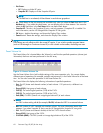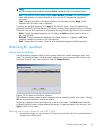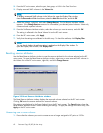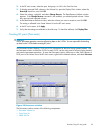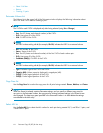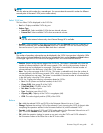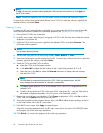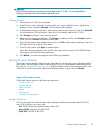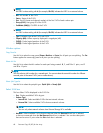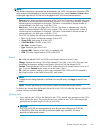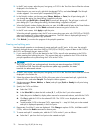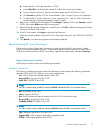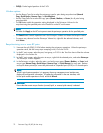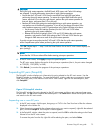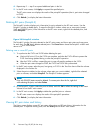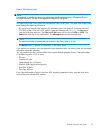
NOTE:
An LDEV number ending with # (for example, 00:01#) indicates the LDEV is an external volume.
• MU:MUnumberoftheP-VOL
• Status:StatusoftheP-VOL
• Port: Port ID (cluster and channel number) of the first S-VOL of each volume pair
• Group (G-ID): Host group ID of the S-VOL
• SvolMode (LUN(S)):CU:LDEVoftheS-VOL
NOTE:
An LDEV number ending with # (for example, 00:01#) indicates the LDEV is an external volume.
• Type: Emulation type of the P-VOL and S-VOL
• Capacity (MB): Volume capacity displayed in megabytes (MB)
• CLPR(P):Cac
he logical partition of the P-VOL
• CLPR(S): Cache logical partition of the S-VOL
Window options
Copy Pace list
Usethislisttoselectthecopypace(Slower, Medium,orFaster)forallpairsyouaresplitting.TheSet
button appl
ies the same copy pace to all pairs you are splitting.
Select MU list
Use this list to select the MU number for each pair being created: 0, 1,and2 for L1 pairs, and 1
and 2 for L2 pairs.
NOTE:
You can select an MU number for a cascade pair. You cannot select the same MU number for different
cascade pairs of the same P-VOL (root or node volume).
Select Split Type list
Use this list to select the pairsplit type: Quick Split or Steady Split.
Select S-Vol box
This box filters S-VOLs displayed in the S-VOL list.
• Port: Display available S-VOLs by port.
• Volume Type:
• Internal Vol: Select available S-VOLs that are internal volumes.
• External Vol: Select available S-VOLs that are external volumes.
NOTE:
You can only select external volumes when External Storage XP is available.
• Attribu
te: Select available S-VOLs that are reserved when the Reserved check box is selected,
or that are unreserved when the Not Reserved check box is selected. You can also select pairs
that can be set as L2 pairs when the Pair check box is selected.
68
Business Copy XP (BC) for the Array



